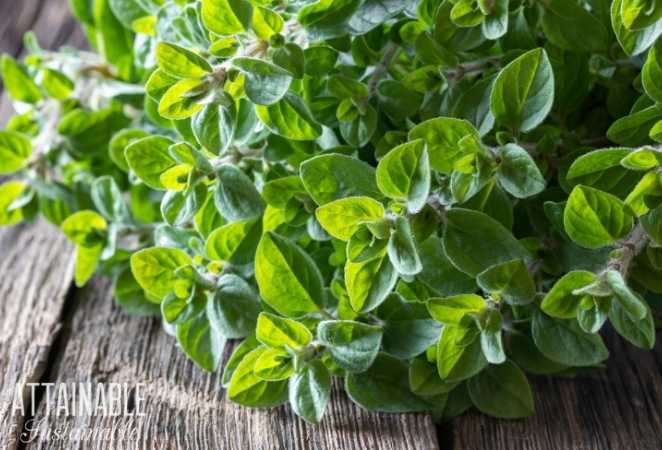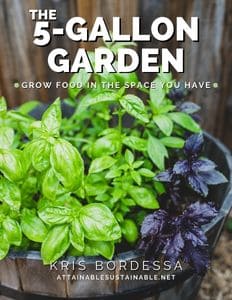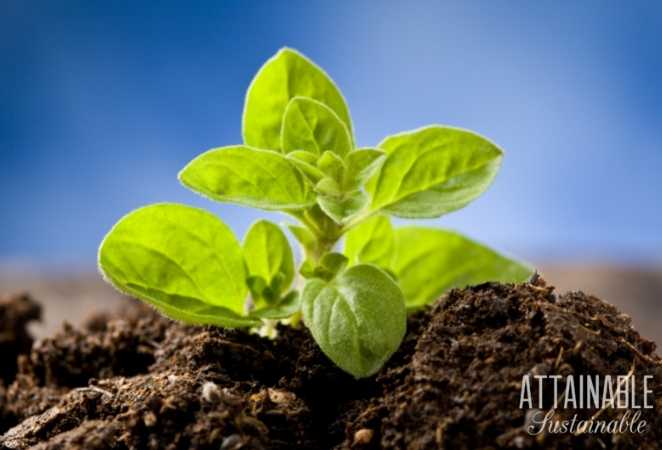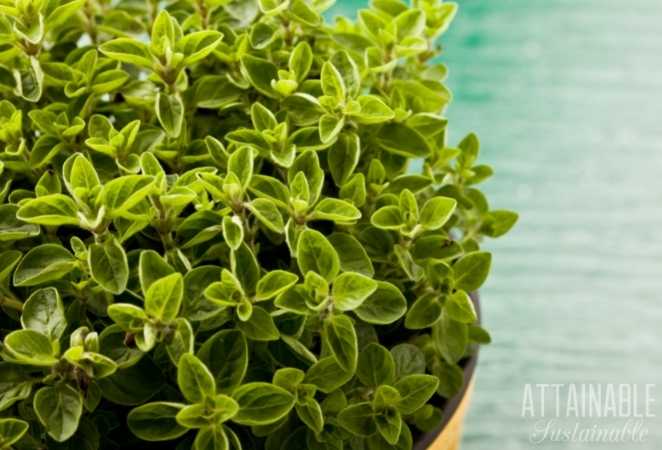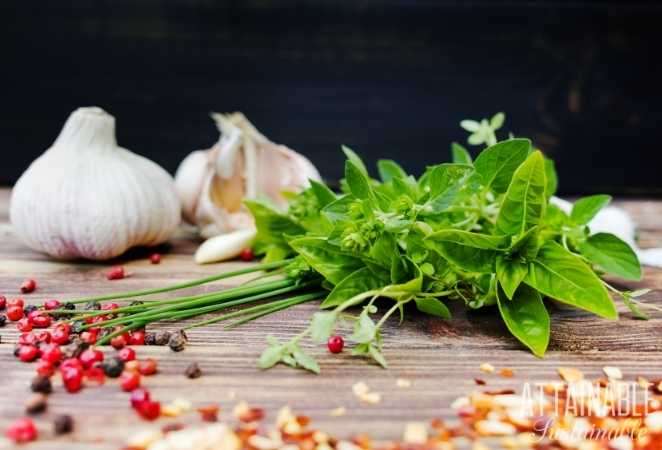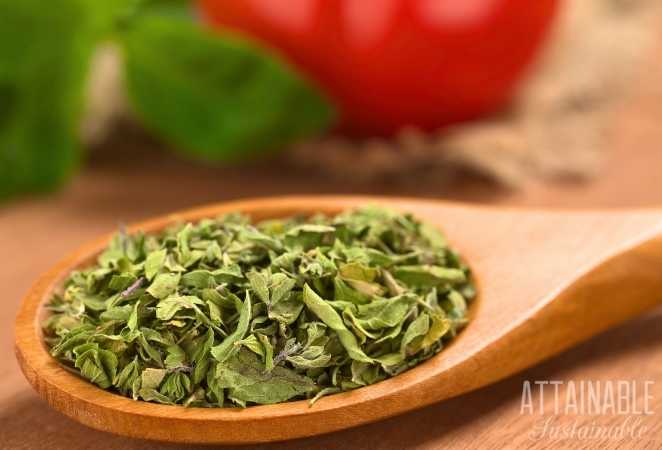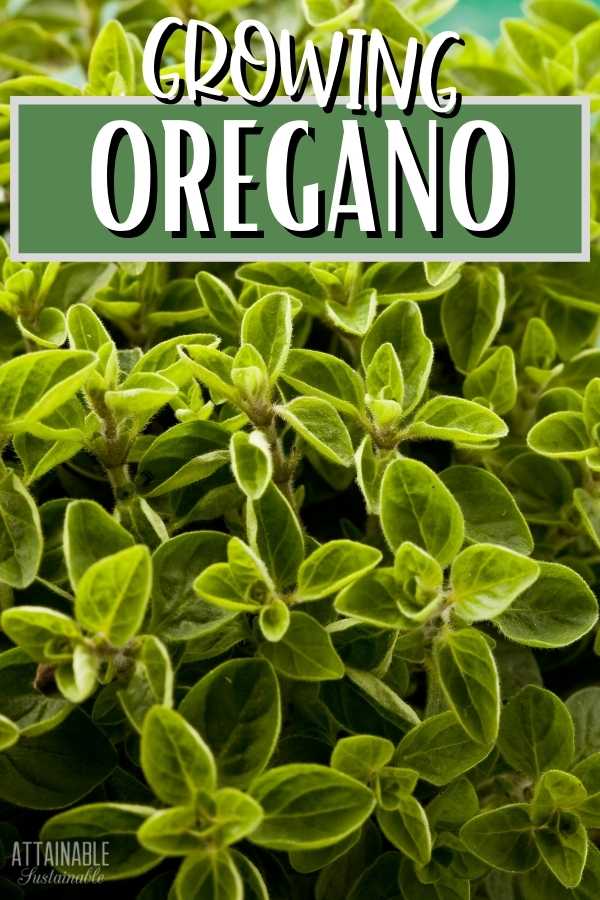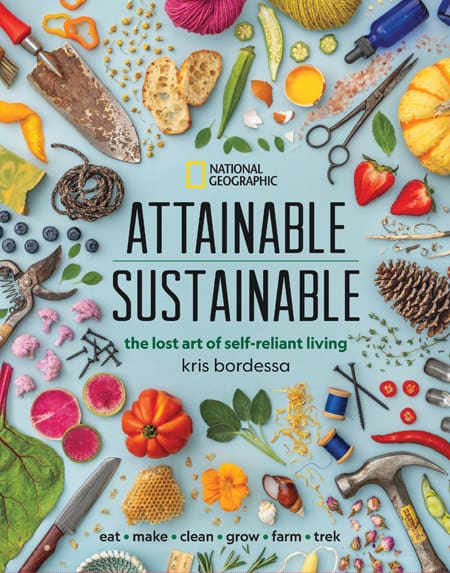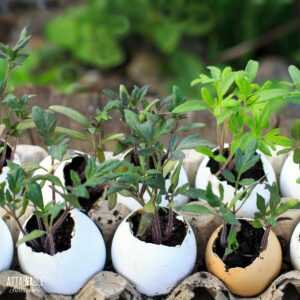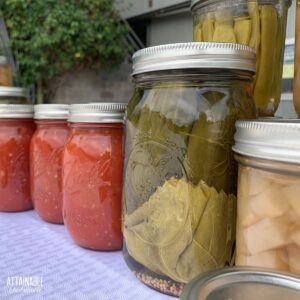Consider growing an oregano plant in your garden to flavor Italian, Greek, Middle Eastern, or Mexican dishes. This flavorful herb is enjoyed fresh or dried because of its pungent and powerful peppery flavor.
If you love cooking, garlic is a great addition to your vegetable garden, too!
Contributed by Jodi Torpey, author and Master Gardener.
All About Oregano
Oregano plants are somewhat woody with leaves that are essential to any gardener. Plant culinary oregano in your herb garden, but also in your perennial and annual flower beds because it makes a bushy ornamental plant and the flowers are especially attractive to bees and other beneficial insects.
Because oregano originated in the Mediterranean, plants can grow as perennials in warm climates and as an annual herb in cold weather regions. Hardy to Zone 5 if protected during freezing temperatures, oregano makes an attractive addition to gardens from early spring until fall.
New to gardening? Limited on space? The 5-Gallon Garden gives you the skills you need to grow food in the space you have. Get started with your garden today!
Oregano Plant Varieties
You may be surprised to learn there are different oregano plant types in the Origanum and other species. Choose the oregano you want to grow for how you plan to use it in the garden. Most gardeners want to use their oregano in cooking, while others want a strictly decorative plant, such as hopflower oregano (Origanum libanoticum), instead.
Grow Some Greens!
Ready to grow fresh greens, no matter WHERE you live? Sign up for my
FREE quick-start guide and start growing some of your own food!
Here are the most common choices of oregano used in cooking:
Greek oregano is Origanum vulgare var. hirtum with an intense, spicy flavor used in many different kinds of cuisines.
Mediterranean oregano, Origanum vulgare, is a milder type of oregano and the one most commonly found in grocery stores.
Italian oregano, Origanum. x majoricum, has a bit of the sweet, perfumy scent of a similar-tasting herb called marjoram.
Syrian oregano, Origanum syriaca, is known as Za’atar, a Middle Eastern strong-tasting herb.
Mexican oregano, Lippia graveloens, is a different type plant that has a stronger oregano flavor used in a variety of Mexican dishes.
How to Plant Oregano
You can grow oregano plants from seeds, taking cuttings, or buying transplants at a garden center. Plant oregano seeds indoors in early spring or outside once the spring weather has warmed. Read seed packets carefully for planting instructions. Oregano seeds are very tiny and they need contact with the soil, but some varieties need light to germinate and don’t need to be covered.
Keep soil moist with a light misting so you don’t dislodge the seeds. Be patient, as seeds may take 2-3 weeks to sprout.
A faster alternative is to plant oregano transplants. Select the type of oregano you want based on how you plan to use it, either in cooking or as a decorative plant.
Be sure to acclimate plants to the outdoors before planting in the garden by exposing them slowly to the outside a few hours each day over a week or so.
When plants are hardened off, dig a planting hole as deep as the plant is in its container, place in the hole and gently firm soil around plant roots. Keep soil moist; a layer of organic mulch will help maintain moisture and keep weeds down.
Requirements for Growing Oregano
Light requirements
Locate a sunny spot for oregano plants, although partial shade may be fine in areas where sunlight is intense. Because oregano originated in the Mediterranean, plants like it warm and can tolerate hot and humid conditions.
Soil requirements
Oregano needs a well-drained soil in order to grow well. Plan to amend garden beds with compost or other organic matter to make sure water drains quickly and easily. While oregano isn’t fussy about soil, it prefers a slightly alkaline pH and average fertility.
Water and fertilizer requirements
Once established, oregano is an herb that doesn’t need pampering and prefers soil that’s on the dry side to keep roots healthy.
Let the soil dry slightly between waterings. Pinch back plants to encourage branching and be sure to use the leaves in recipes.
An occasional fertilizing through the summer with a general-purpose fertilizer will keep plants green and healthy.
Oregano pests and other problems
Here are three potential problems when growing oregano:
Spider mites—Spider mite damage shows up on plant leaves due to their feeding. Look for leaves that look scorched, stippled or bronzed, leaves that yellow and fall off or check under leaves for spider mite webbing. Avoid spider mite problems by keeping plants healthy with moist soil and regular applications of fertilizer. Remove mites with a strong stream of water from the garden hose.
Aphids—Aphids are tiny insects that suck fluid from plants and leave behind a sticky substance called honeydew. Aphid damage to leaves turns them yellow and makes them curl under. Aphids can be easily washed off with a spray from the hose, especially under leaves. It may take several days of spraying to control the aphid problem. Read more about controlling aphids here.
Root rot—Root rot is a symptom of excessively wet soil that makes for soggy roots. Prevent root rot by planting oregano is light, well-draining soil and allowing it to dry between waterings. Before watering, poke your finger into the soil and ensure soil needs moisture.
How to Grow Oregano in Containers
Oregano grows well in containers, especially when placed in full sun. Plant oregano on its own or in a container with other herbs that require similar sun, soil and water conditions. A windowsill herb garden will get you through the winter months.
Ensure the container has holes in the bottom for drainage and fill with a potting soil meant for outside container plantings. Place oregano plants in the soil at the same level as they were in their containers and gently firm soil around the roots.
Water container to keep soil slightly moist and harvest oregano right before plants begin to flower. Add a water-soluble, balanced plant fertilizer to the watering can every few weeks to keep plants green and growing.
How to Harvest Oregano
You can begin harvesting oregano right before the plants start to flower. Use sharp scissors or pruners to clip the stem tips, but leave 4-6 pairs of leaves on the plant. Harvesting in this manner will help the plant become more compact, but bushier.
The leaves are most flavorful after plants have had a chance to grow into mid-summer. For a big harvest, cut to the last several inches of stem and lowest set of leaves to allow for more growth.
After clipping the stem tips, use the fresh oregano or hang the stems in a cool, dry place to let them dry. When completely dry, remove leaves from the stems and store in jars or lidded containers away from heat and sunlight.
Keep harvesting oregano leaves as plants are growing and before plants start to flower. Once plants flower, growth will slow or stop. However, the flowers will attract bees and other beneficial insects because they’re a good source of nectar.
Using Oregano in the Kitchen
Oregano leaves can be used fresh, dried, or even frozen. Use dried oregano in spaghetti sauces and on pizzas, mix into scrambled eggs, sprinkle on top of meat or vegetable dishes (like Oven Roasted Rainbow Carrots), use it to flavor soups and stews, even salsa! Fresh oregano adds new character to ordinary green salads and steamed vegetables. Oregano flowers are edible, too, so don’t hesitate to chop those into your dishes.
Propagating or Saving Oregano seeds
If you save oregano seeds to plant and grow again, be aware that seed propagated plants may grow differently or not true to the parent plant. If you want to plant oregano from seeds, it’s best to buy seed packets from a reputable source.
Otherwise, plan to grow oregano from cuttings. Take cuttings from plants with the highest quality flavor and when stems are still flexible.
Cut about 3-5 inches of fresh stems right above the spot where a leaf is starting to grow. You can plant the cuttings in potting soil, but the easiest way to propagate the fresh stems is to place them in a jar or glass with some water in the bottom. Replace the water with fresh if it starts to become cloudy.
Roots will form from the bottom of the stem and when they’re several inches long, you can plant the cutting in a loose, moist potting soil.

